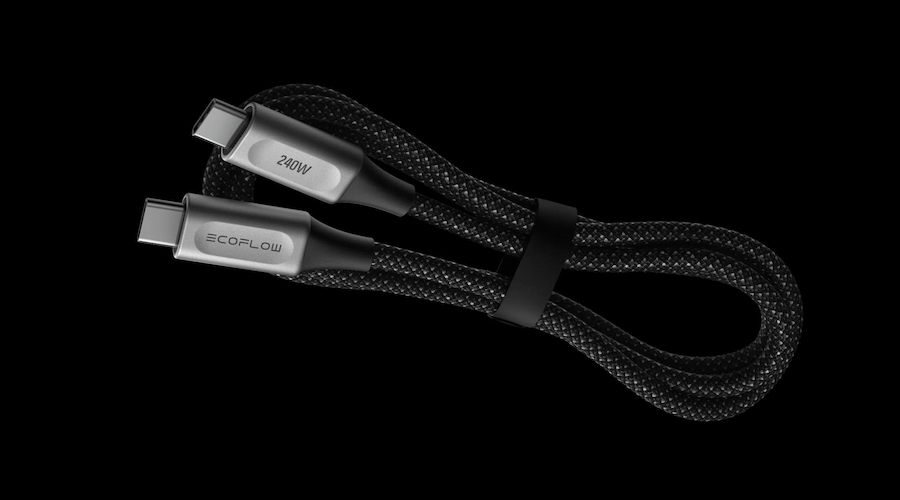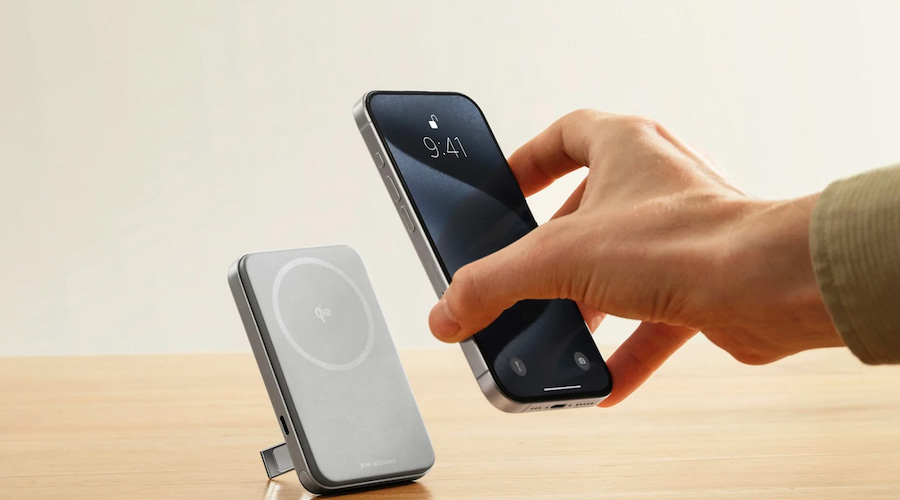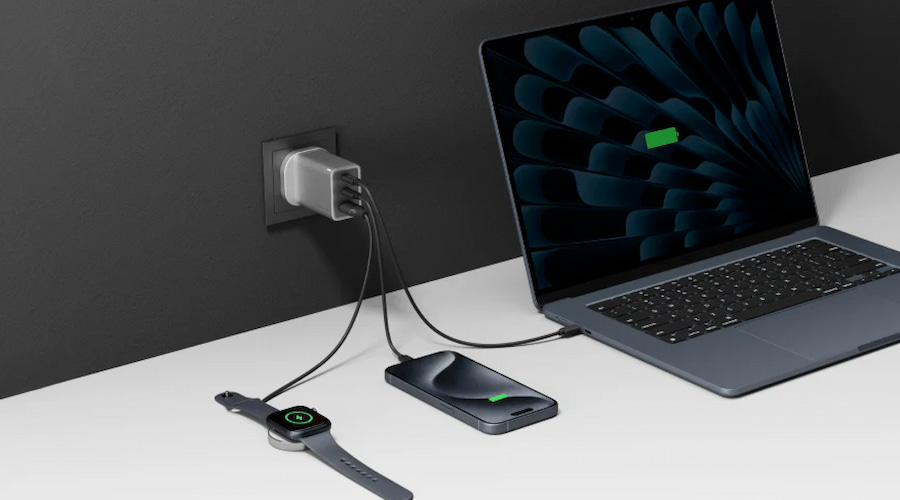All Types of Phone Chargers Explained: From USB-C to Wireless
Phone chargers aren’t what they used to be. The classic USB-A and Micro-USB are fading out, USB-C is everywhere (newer iPhones included), and wireless pads and stands are turning up on desks and bedside. With so many types of phone chargers around, it’s no wonder picking the right one can feel like a bit tricky.
Whether you’re trying to speed up your charging, cut down on clutter, or find one charger that works for all your devices, we’ve got you covered. Here’s a quick guide to the different types of phone chargers and how to choose the one that fits your life.
Main Types of Phone Chargers Explained
There are mainly seven different types of chargers for phones you’ll encounter, each tuned for different power needs, ports and situations. Below is a clear rundown of how each charger works and what to expect.
USB-C Chargers
Driven by the EU’s Common Charger Directive, USB-C is now the universal default for most modern devices, from phones and tablets to laptops and more. Even Apple has embraced the change, with the iPhone 15 series marking the switch.
The small, oval-shaped connector is reversible and supports super-fast charging thanks to USB Power Delivery (PD). Earlier versions of PD topped out at 100W, but newer updates of the PD 3.1 standard push that limit up to 240W—for high-end laptops and next-gen devices.
For phones, USB-C chargers typically deliver anywhere from 18W to 65W, making them ideal for quick top-ups. One good USB-C charger paired with a certified cable can often handle all your gadgets, from earbuds to tablets.


Lightning Chargers
Lightning is Apple’s proprietary, 8-pin connector introduced in 2012. It’s also reversible and supports USB-PD fast charging up to 24W on iPhone 8~14 models. Paired with a 20W+ USB-C adapter and an MFi-certified USB-C to Lightning cable, your iPhone can hit roughly 50% in 30 minutes.
You’ll also find plenty of USB-A to Lightning chargers, but those charge much slower. Although Apple’s latest handsets have switched to USB-C, millions of older iPhones and AirPods cases still rely on Lightning, so these cables and chargers remain common.
Micro-USB Chargers
Micro-USB was once the standard for Android phones and other devices, but it’s slowly being phased out. It typically delivers up to 12W of power, although some devices support faster charging (up to 18W) with technologies like Qualcomm Quick Charge. You’ll still find Micro-USB on budget phones, Bluetooth speakers, and older power banks.
Wireless Chargers
Wireless charging transmits energy through inductive coils, letting you power up your phone without plugging in—just place it on a wireless pad or stand and let it do the rest. Most devices today use the universal Qi standard, which delivers between 5W and 15W depending on your phone.
Apple’s MagSafe takes things a step further by adding magnets for better alignment and boosting iPhone charging speeds to 15W (or up to 25W on the newest iPhone 16 models). The latest Qi2 open standard brings MagSafe-style magnets to third-party chargers, snap-on power banks, and future Android devices, making wireless charging faster and more reliable across the board.
While wireless charging isn’t quite as speedy as plugging in, it’s perfect for desks and nightstands where convenience matters more than raw speed.


Portable Chargers (Power Banks)
Portable chargers or power banks store energy in lithium-ion cells, so you can charge your devices on the go. Their capacity is typically measured in milliamp-hours (mAh). A 10,000mAh pack usually refills a mid-range phone 1.5–2 times, while larger 20,000mAh models gets you roughly double that.
Basic power banks typically offer a standard USB-A port (up to 12W), while higher-end models include USB-C PD ports delivering 30W, 65W, or even 100W+, great for charging tablets and laptops as well.
Need a such a powerhouse portable charger that can top up all your devices when you’re away from a plug? The EcoFlow RAPID Pro Power Bank (20,000mAh, 230W, 100W Built-in Cable) crams a 20,000 mAh (72 Wh) cell into an airline-friendly brick that slips in a jacket pocket.
One built-in retractable 100W USB-C cable, a second 100W USB-C port and two 65W USB-C jacks add up to 230 W, letting you juice two laptops and a phone at once without breaking a sweat.
The colour LCD reports real-time wattage, capacity and time-to-empty, while smart power distribution keeps every device happy. Snap it onto EcoFlow’s 320W desktop dock and it races from 0 – 80% in about 47 minutes. USB-C input alone still climbs to 100W for fast hotel refills, and the pack stays below 600 g in your bag.
EcoFlow RAPID Pro Power Bank (20,000mAh, 230W, 100W Built-in Cable)
Multi-Port Chargers
Multi-port chargers are perfect for anyone juggling several devices. They come with two or more USB ports, often a mix of USB-A and USB-C, and let you charge multiple gadgets at the same time.
Modern multi-port chargers often use gallium nitride (GaN) technology, which makes them smaller, lighter, and more efficient than older silicon-based bricks.
Some provide dedicated power to each port, while others share a total power budget between them—up to 100W per port and 320W overall in high-end models.


Car Chargers
Car chargers plug into your vehicle’s 12V socket (or 24V in larger vehicles) and step the voltage down for USB charging. Newer models with USB-C PD ports can deliver up to 45W, with additional USB-A ports for older devices.
They’re perfect for keeping your phone charged during long drives, especially if you’re running navigation apps or streaming music. Look for ones with overheat and overcurrent protection for safer charging on the road.
Key Factors to Consider When Choosing a Phone Charger
Now that you’ve got a clear idea of the different phone charger types, let’s see how to find the right one for your needs. While it’s easy to match the plug to the port, the key to getting the best performance is ensuring your phone, cable and charger “speak the same language” on power, safety and efficiency.
Keep these core checks in mind, and you’ll avoid slow charges, overheated batteries and wasted money.
Power Output and Charging Standards
To power up your device quickly and safely, start by checking the max wattage and charging standard your phone supports. USB-C Power Delivery (PD) is now the most common, with most phones drawing between 20W and 65W.
If your device supports Programmable Power Supply (PPS), like Samsung Galaxy S models, look for a PPS-compatible charger. This tech adjusts voltage and current in real time, keeping your phone cooler and charging more efficiently.
Cable Quality Matters
Even the best charger won’t perform well if paired with a poor-quality cable. For any charger delivering over 60W (more than 3A), make sure to use a USB-C cable with an E-Marker chip rated for 5A. Without it, your charging speed may be throttled, or the cable could overheat.
Look for Safety Certifications
Safety is critical. Always check for the USB-IF Certified logo or a Test-ID (TID) to confirm the charger meets industry standards. In the UK and EU, CE marking is required for consumer electronics, and globally, IEC 62368-1 compliance ensures protection against electrical and thermal hazards.
Efficiency, Heat and Battery Health
Newer gallium nitride (GaN) chargers are a big upgrade over older silicon designs. They’re more efficient, generate less heat, and stay compact even at higher outputs like 100W. Less heat is better for your phone, too, as charging at high temperatures can speed up battery wear.
Ports and Power Sharing
If you charge multiple devices at once, go for a wall adapter or high capacity power bank charger with multiple ports. Some split power evenly, while smarter models dynamically distribute power based on each device’s needs. This ensures everything gets the fastest charge it can handle without overloading the charger.
Portability and Travel Rules
When you’re looking for the best portable battery charger for phone, check the Wh rating as well. Power banks under 100Wh (roughly 27,000mAh) are allowed in hand luggage on flights, but anything larger may need airline approval.
Wall chargers don’t store energy, but compact GaN models with foldable plugs are perfect for tight spaces and international adapters.
Wireless Charging Considerations
Wireless charging is all about convenience, but speed varies. Standard Qi pads usually deliver 7.5W~10W, while Apple’s MagSafe boosts iPhone charging to 15W with perfect alignment.
The newer Qi2 standard brings MagSafe-style magnets to third-party accessories for 15W charging and more reliable placement, all while keeping the prices reasonable. So, if you’re considering wireless, Qi2 is what to look for!
Conclusion
Hopefully, you now have a better understanding of the different types of phone chargers available and which fits your devices. Whether you’re shopping for a fast USB-C charger, a compact multi-port hub, a reliable power bank, or a convenient wireless pad, focusing on the essentials will help you charge smarter.
FAQs
What is a C type or B type charger?
The term “C-type” typically refers to USB Type-C, the now universal connector standard known for its reversible design, fast charging, and high-speed data transfer capabilities. USB Type-C supports the USB Power Delivery (USB-PD) protocol, enabling faster charging speeds—up to 240W—making it suitable for smartphones, tablets, and laptops.
In contrast, “B-type” often refers to USB Type-B connectors, which are larger, more square-shaped, and primarily used for devices like printers and scanners. USB Type-B connectors are less common for mobile devices today, as USB Type-C has become the universal standard.
What are the types of phone chargers?
Phone chargers generally fall into three categories: USB-C, Lightning, and Micro-USB. USB-C is the latest and most versatile, offering fast charging and data transfer. Apple’s Lightning connector is used in iPhones up to the iPhone 14 series, while Micro-USB was common in older Android devices but is now largely obsolete.
Beyond the USB connectors, other types include multi-port chargers, power bank portable chargers, and car adapters. Additionally, wireless charging has gained popularity, especially with standards like Qi, Qi2, and Apple’s MagSafe, providing convenient, cable-free charging options.
Which charger is the fastest?
When it comes to raw charging speed for your devices, USB-C Power Delivery (PD) remains at the top. EcoFlow’s new 140W multi-port RAPID Pro charger delivers 140W per port across its first two USB-C outlets, along with additional 30W ports—enough to power two laptops rapidly or one laptop with blazing speed, all while charging smaller devices alongside.
If you’re looking for both fast charging and portability, the EcoFlow RAPID Pro Power Bank (20,000 mAh, 230W output) is a strong contender. It includes a built-in 100W retractable USB-C cable and offers a total of 230W across four ports—easily handling a phone, tablet, and a laptop at once.
Can I use a USB-C charger for my iPhone?
Yes, you can use a USB-C charger for your iPhone, provided your iPhone model supports USB-C charging. Starting with the iPhone 15 series, Apple transitioned to USB-C, allowing for faster charging and data transfer.
For earlier models, a USB-C to Lightning cable is required to connect to a USB-C charger. Ensure that the charger supports USB Power Delivery (USB-PD) and at least 20W power for optimal charging speeds.